This Month We Are Mostly Eating….
April 21, 2012
This is the inaugural post in what I intend, over the next twelve months, to be a month by month record of the wild edible plants we are gathering and some of the ways we prepare them. Although mostly intended for folks here in Japan many of the plants I’ll discuss are experienced international travellers (not so silly as to recognise national borders) and can be found throughout the world. This list of April wild edibles is by no means exhaustive, just what we happen to be eating regularly at this time of year.
The big ones for us right now, in terms of quantity, are itadori (Japanese knotweed, Fallopia japonica) and takenoko (bamboo shoots, Phyllostachys edulis or moso is the species we are currently eating). These we gather in large numbers, feasting on them as well as preserving enough to see us through to next spring. I have written previously about itadori and takenoko , including the methods of preservation we use so I will say no more here.
Shidoke (Cacalia delphinifolia) is sansai (a mountain vegetable). It grows in the shade of the forest, tolerating deep shade, and seems to do well even in the acidic soil of sugi plantations. Although shidoke is usually considered spring sansai, we were eating it well into mid-summer last year without it becoming too tough or stringy. The leaves and stems are eaten. Usually we boil these briefly (basically just dipping them in boiling water) or we steam them. Season with a little soy sauce and some bonito flakes, if you like. Fantastic and unique flavour.
There are a few shidoke-like looking plants, often growing amongst the shidoke. To my knowledge all of these are also edible although in my experience none are quite so good as shidoke. The similarities are quite superficial so it is easy enough to stick to pure shidoke. The leaves are dark green, slightly shiny, with a green stem that can range from light green to a very dark green, almost black. The stem divides into multiple stalks, each topped with lobed leaves having serrated edges.
Nobiru (Allium grayi, Chinese garlic) is a yasõ, or field vegetable. It can be found from mid/late winter in these parts. The whole plant is eaten and has a flavour reminiscent of spring onions though more pungent – the bulb being a little more pungent than the aerial parts. Like the other members of this genus nobiru has excellent medicinal properties. Nobiru is said to be an emmenagogue, nervine and tonic. We often eat in salads, miso or other soups or, our particular favourite, roughly chopped raw nobiru soaked for a couple of days in soy sauce and mirin (sweet cooking sake).
Look for nobiru in fields and forest edges. It tolerates a fair amount of shade.
Tampopo (common dandelion, Taraxacum officinale) is a plant very dear to me. It is now flowering so past the best time for eating (as tampopo comes into flower the leaves become very bitter) but, that just means it is time for making dandelion wine! We have been eating tampopo leaves all winter and, prior to flowering, making dandelion beer, for which we use whole young plants. (A post dedicated to herbal beer making is slowly fermenting.) We eat the leaves in salads and as a pot herb and roast the roots to make dandelion “coffee.”
Dandelion is an important medicinal plant and commonly found wherever humans set up camp. The name officinalis is derived from the word opificina, later officina, meaning a workshop or pharmacy. Dandelion contains anti-bacterial compounds and the juice of the plant applied to wounds will aid in the prevention of infections. It is an excellent diuretic as it is also high in potassium which other diuretics tend to deplete in the body. The list of other medicinal uses is long.
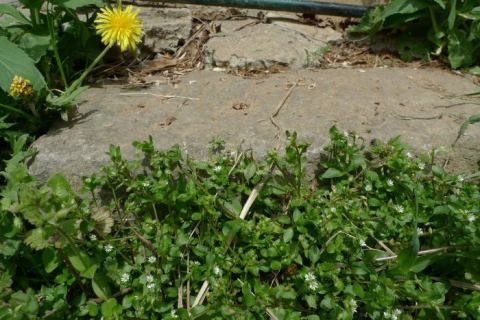
Hakobe and tampopo growing right up to the front door step
Hakobe (Chickweed, Stellaria media) as one of the “seven herbs of spring” ( Nanakusa-no-sekku) is accorded a special place amongst wild edibles in Japan. It is also another personal favourite of mine and another plant that follows people closely. There are a number of closely related species all referred to as chickweed – we have three growing together here. They all make for good eating although true hakobe (Stellaria media) makes for the best eating and is the preferred medicinal species. Amongst the chickweeds Hakobe is distinguished by fine hairs growing along one side of the stem in a single band. More nutritious that much of what you’ll find in your garden, if you’ve been trying to weed it out, give it up and start eating it!
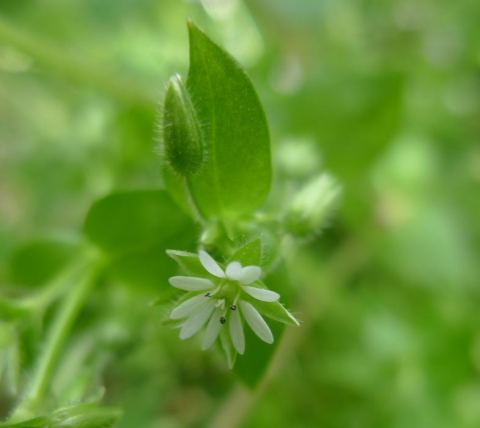
Hakobe (Stellaria media, chickweed)
Hakobe likes fertile ground and cool weather. We eat it from autumn until about now when it is starting to become sparser with the warm weather. Look for it around cultivated/disturbed areas. Often it can be found growing close to water or areas that receive periodic flooding.
Renge or genge (Astragalus sinicus, Chinese milkvetch) is one of a number of leguminous, nitrogen fixing plants, that grow in fields and dry paddies in Japan. It has traditionally been used as a green manure crop throughout east Asia. The leaves, flowers and seeds are all edible. The flowers have a delicate pea flavour, fresh and pleasantly sweet. The leaves are better cooked.
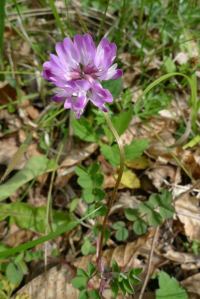
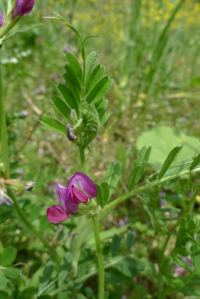
Left: Renge (Astragalus sinicus). Right: Karasunoendõ (Vicia angustofolia)
Look out also for karasunoendõ (Vicia angustofolia), suzumenoendõ (Vicia hirusta). These too are leguminous nitrogen fixers and will be found around fields, rice paddies and other cleared or cultivated areas. They are small climbing plants and it is their tendrils, young leaves and flowers that are the tastiest. Karasunoendõ, in particular, has quite a strong pea flavour and wonderfully sweet flowers.
Yomena (Aster yomena or Kalimeris yomena), is a great spring green. We eat the leaves and tender stems cooked and served with a dash of soy sauce and bonito flakes.
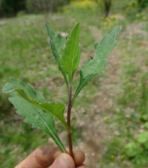
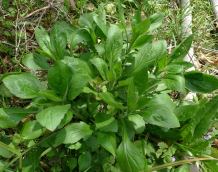
Left: Yomena (Aster yomena), Right: unidentified yomena-related edible
There are a number of similar looking plants, all in the same family and all edible. I can’t give you the names for these as I don’t know them, yet. At this time of year the stalks of yomena and related plants, situated in sunny spots, may be getting a little stringy so harvest from areas of dappled light. You’ll find them in fields, clearings, cultivated areas etc.
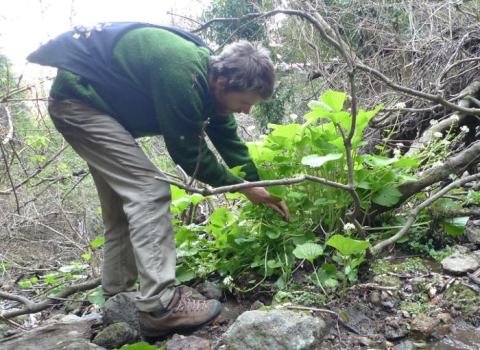
One very happy wasabi plant harvested by one very happy Dion
Wasabi (Wasabia japonica) is mostly known as the pungent green paste with a mustard-like hotness served with sushi. If you’ve eaten wasabi in this form, more likely than not, you’ve probably been eating a mixture of horseradish, mustard and green food colouring, not wasabi. It is difficult to cultivate and therefore expensive and, even in Japan, wasabi substitutes are often used. The best way to eat the root is to grate it directly on to the dish at serving. It loses its flavour very quickly.
More often we eat the leaves and stems rather than roots. These are also pungent though less so than fresh roots. A few leaves gives a bit of boom to a salad.
Another method of of preparation we like is to coarsely tear the leaves and stem, place them in a strainer and pour boiling water over top. Squeeze the leaves to remove excess liquid and place in a jar. Shake the jar well (releases the flavour) and cover with a mixture of soy sauce and mirin. Let sit for a couple of days before eating.
Wasabi only grows where there is clean cool water. Often it will be in streams or on stream banks but can also be found where ground water is relatively close to the surface. Most likely in the mountains and in shady areas. It can be harvested for most of the year.
Taranome are the buds and new leaves of taranoki (Aralia elata), a pioneer tree found where forests have been cleared. Taranome tempura is very popular though we usually just grill or boil the taranome and serve with a little soy sauce or, equal parts miso and mirin, heated in a pan to evaporate off the alcohol and scorch the miso a little.
There is at least one similar looking pioneer tree, karasunosanshõ (crow’s sanshõ, crow’s Japanese pepper), also technically edible but with a strong unpleasant flavour. Once you’ve tasted karasunosanshõ you’ll easily be able to smell the difference between it and taranoki.
To harvest taranome you’ll likely need telescopic pole secateurs as the plant is a fast grower. Look for it at forest edges and especially around abandoned agricultural land.
Sumire (Viola species, violet). At this time of year violet leaves and flowers are added to most of our salads (which typically feature 20 or so different ingredients). I am not sure of the exact species we have here (pictured below) but all violet leaves and flowers are edible. This particular species, whatever its name, is found in the mountains along path edges and other areas of dappled light.
Kureson (Nasturtium officinale, watercress) needs no introduction. A popular vegetable in many parts of the world, the stalks and leaves commonly used as a pot herb or added to salads. A favourite this spring has been watercress and negi (spring onion) or nobiru salad. Slice finely one or two negi or nobiru bulbs and leaves and soak in water for ten minutes. Strain and add to a couple of handfuls of watercress and dress with a mixture of dashi, soy sauce and yuzu or lemon juice.
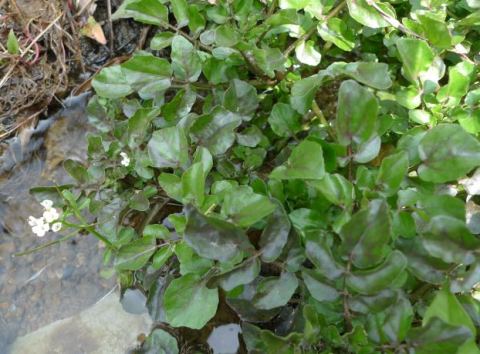
Kureson (Nasturtium officinale, watercress)
Watercress grows in or on the edge of water. Be sure the water is clean before harvesting. In Japan most rice farmers use a lot of chemicals and paddies are connected by irrigation channels so even an organic grower, if surrounded by non-organic growers, will likely be using water contaminated by agricultural chemicals (unless their paddies are at the top of the system).
Shirotsumekusa (White Clover, Trifolium repens) is another common and well known plant but not so commonly eaten. We eat the tender young leaves in salads. When it comes in to flower we will be eating those too. The dried flowers make a good herbal tea though it is the flowers of red clover (Trifolium pratense) that are most commonly used due to their exceptional medicinal qualities. The young leaves and flowers of red clover can be eaten also. White clover has long been used medicinally, particularly among North American Indians.
Suiba/Gishigishi (Rumex species, sorrels and docks). The species we have here are, I think, R. acetosa, R. montanus, R. japonicus, and R. longifolius. We eat young leaves of them all and don’t pay much attention to which species we are harvesting. All have a delightful lemony flavour and are great in salads or as pot herbs. The leaf stalks can also be eaten but can be a little stringy so chop small. Tender leaf stalks make great pickles. Eat all Rumex species in moderation as that lemon flavour comes from the presence of oxalic acids.
Then there are the fiddleheads and tender stalks of warabi (Pteridium aquilinum) and zenmai (Osmunda japonica, Japanese royal fern). Both of these need careful preparation before eating to remove the presence of toxins.
For warabi pour boiling water over the fiddleheads and add some wood ash or baking soda. Soak in the water over night. Strain rinse and cook as desired. For zenmai, bring a pot of water to a boil, add a small amount of baking soda or wood ash. Remove the fluffy stuff from around the fiddlehead and place in the boiling water. Keep boiling the stems with attached fiddleheads for a few minutes but remove from the heat before they get mushy. Let stand in the cooking water over night. Strain, rinse and either cook or dry. If drying, massage the zenmai daily as they dry. Once dried they can be stored and rehydrated before further cooking.
Warabi is known to contain the carcinogenic compound ptaquiloside so, should you choose to eat it at all, eat rarely. We have it once, maybe twice each spring. The Japanese believe the process I described above neutralises the toxins – and they have been eating it for millennia. Still, not one to go crazy on.
Warabi will be found around the edges of paddies and cultivated fields, along roadsides where “weeds” are regularly cut and particularly in places where the land has been burnt. On occasion I find warabi in the forest also but usually the shoots are small and somewhat stringy.
Zenmai produces fertile and sterile fronds, usually referred to as female and male respectively. It is only the fertile female fronds that are eaten. These are usually slightly smaller, both in height and bulk and look more tender. The plant produces the two types fronds in separate clumps so look for the female clump. It is not always the case that clumps of male and female fronds will be present in one location though usually they will be nearby.
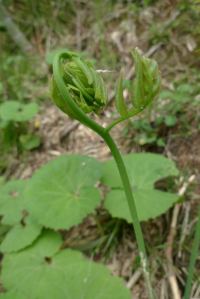
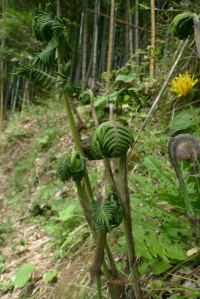
Left: female zenmai. Right: male zenmai
Zenmai prefers shadier environments so will often be found in forests or the shady edges of vegetation stands or roadsides. It will also grow in full sun if the location is particularly moist.
Other notable edibles at this time of the year that I shall just briefly mention are the tendrils of the akebi vine (Akebia spp.), ashitaba (Angelica keiskei), and udo (Aralia cordata). The latter two we will likely still be eating, and thus writing about, next month. By then the akebi tendrils will be too tough. The tendrils of both the three-leaf akebi (Akebia triloba) and the five-leaf (Akebia quinata) are delicious. Steam or lightly boil.
Enjoy!
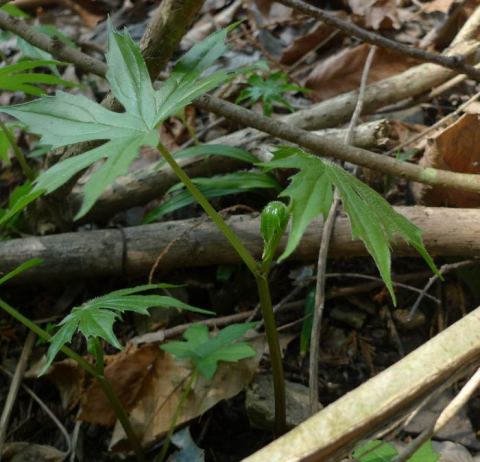
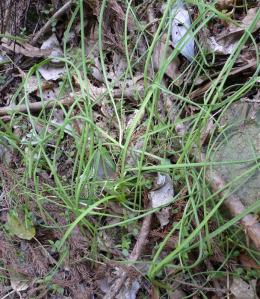
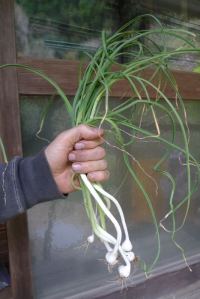
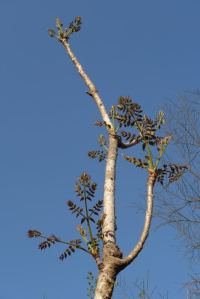
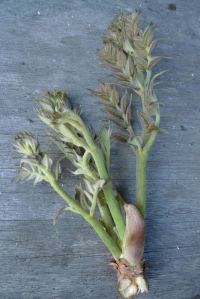
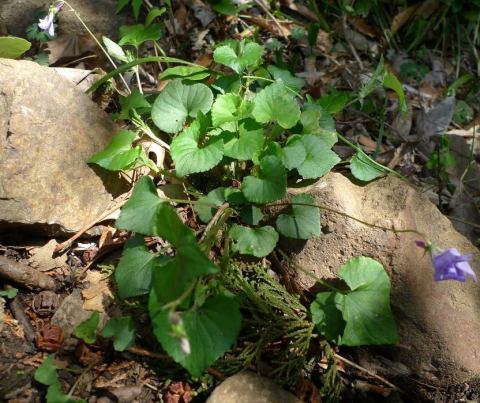

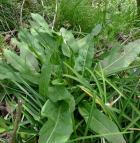
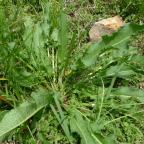
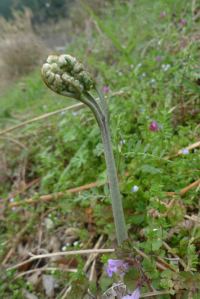
April 21, 2012 at 9:54 am
very informative dion…
love to you and asako from us in the south 🙂
April 21, 2012 at 12:13 pm
Greg, you sound like a school teacher!
love from north to south
April 21, 2012 at 2:20 pm
Your previous writings had enlightened me on the many benefits of eating wild and led me to question how much time I spend cultivating food when I could just forage for it. So with this new inspiration last week we enjoyed some warabi and nobiru. The latter of which has been plaguing my field for years, and although I knew it was edible, I had some type of bias towards it. But I would’ve never guessed that so many of the ‘weeds’ I see regularly outside my front door and in my field would be edible. This post was exactly what I needed to move forward. Thanks!!
April 25, 2012 at 6:11 pm
Thank you for the wonderful comment. Good luck with the foraging!
April 25, 2012 at 11:32 am
Thanks for this very intense and useful list. Love the suggestions for preparation.
One thing I hear a lot of this season is Yomogi. Are you foraging this too?
April 25, 2012 at 6:10 pm
Thanks Mark. Yes we are foraging yomogi. In fact I am about to bottle some yomogi beer although this was made from dried yomogi from last year. I will probably cover yomogi next month.